

by Tony Wrenn, Hon.
AIA
As the Teddy Roosevelt era segued into the Taft and then Wilson
administrations, the AIA found itself in the enviable position of
advisor in the formation of a federal council of fine arts, and
selection of the Lincoln Memorial and its site. During this Golden
Age, the AIA held its first West Coast convention, approached a
membership of 1,000, and inaugurated a feisty new Journal that took whacks at U.S.
public buildings policy right on its cover. And, sadly, the
Institute mourned the loss of one its most prestigious members just
before he was to receive the AIA’s second Gold Medal.
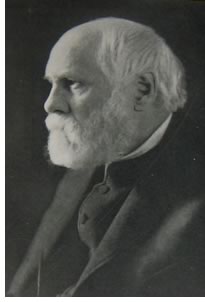 1909:
Toward a Fine Arts Commission
1909:
Toward a Fine Arts Commission
Just before the end of his term in January 1909, President Theodore
Roosevelt established by executive order a Federal Council of Fine
Arts. The AIA, in its turn, had been discussing a federal
“bureau of architecture” since 1875, and Executive
Director Glenn Brown and President Cass Gilbert often talked with
President Roosevelt about creating such a group. In meetings and
correspondence between the AIA and the president, the aims of such
a body were discussed and potential members were suggested. The
resulting Roosevelt Council of Fine Arts consisted of architects,
painters, sculptors, and a landscape architect. The executive order
included the AIA correspondence and White House responses and
directed that “the heads of Executive Departments, Bureaus and
Commissions govern themselves accordingly. Hereafter, before any
plans are formulated for any buildings or grounds, or for the
location or erection of any statue, the matter must be submitted to
the Council I have named and their advice followed unless for good
and sufficient reasons the President directs that it be not
followed.”
The council met at the Octagon to organize and held a formal
meeting on proposed locations for the Lincoln Memorial. The council
was then invited to the White House, where it reported in favor of
the Mall site, ending discussions of placing the memorial at any
other site. Inaugurated in March 1909, President William Howard
Taft issued an executive order on May 21, 1909, revoking the
Roosevelt order. Taft assured the AIA that he was in favor of such
a group, but felt it should be established by the Congress to have
the power it needed. Lobbying for congressional action began. On
May 17, 1910, Congress approved legislation establishing a United
States Commission of Fine Arts “to advise upon the location of
statues, fountains and monuments in the public squares, streets and
parks in the District of Columbia . . . and upon the selection of
artists for the execution of the same.” Later that year,
President Taft widened the commission’s powers by executive
order, giving it authority to advise on plans for public buildings
erected by the government in the District of Columbia.
1909: Honoring McKim
At the 1909 convention in December, President Gilbert urged members
to “nationalize your ideas,” suggesting that “We
have never held a convention on the Pacific Coast. It is time we
did.” The highlight of the 1909 Convention was to have been
the awarding of the Gold Medal, the AIA’s second, to Charles
Follen McKim, but McKim died before the medal could be awarded.
Still, the event was a glittering one. An exhibition of the work of
McKim, Mead and White was mounted at the Octagon. “This
exhibition shows that fitness, proportion, beauty, refinement,
study and striving at perfection, whether the problem be great or
small, are always evident,” noted a description of the
exhibition in the published proceedings of the “McKim Memorial
Meeting.” Tributes of respect came from around the country,
and President William Howard Taft; Senator Elihu Root; U.S.
Ambassador to Great Britain Joseph Hodges Choate; Cass Gilbert; and
American Academy in Rome President William Rutherford Mead
(McKim’s partner in the firm McKim, Mead and White)
spoke.
President Taft’s speech is remarkable for his recounting of
the inside story of how McKim saved the Mall when the Agriculture
Building, already under construction, was being built. Taft was
then Secretary of War, under Roosevelt, and involved in the
Agriculture Building controversy. He noted of McKim: “He was
sensitive, as I presume most geniuses and men of talent are, and he
suffered much as he ran against that abruptness and cocksureness
that we are apt to find in the neighborhood of Washington both in
the Executive and the Legislative branches. He was the last person
to give you the impression that he had either abruptness or
cocksureness, but I don’t know any one who, when he had set
his mind at a thing and had determined to reach a result, had more
steadfastness and manifest more willingness to use every possible
means to achieve his purpose than Mr. McKim.” Taft concluded,
“I am living in a house to-day [the White House] that has been
made beautiful by Mr. McKim. It is a house to which you can invite
any foreigner from any country, however artistic, and feel that it
is a worthy Executive Mansion for a great nation like this,
combining dignity and simplicity, and reflecting in all its lines
(it does to me) the dignity and simplicity of the art of Mr.
McKim.” (One who would understand McKim would do well to read
the speeches of Taft, Root, Choate, and Gilbert.)
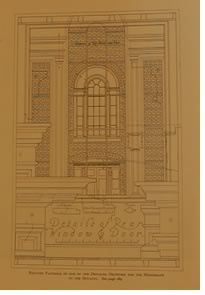 In
presenting the Gold Medal, Gilbert said, “His monuments in
bronze and marble will long enrich his native land, his
benefactions, not measured alone in the standards of commerce, have
laid the sure foundation of even greater monuments in the hearts of
his countrymen. But it is not for these alone that we offer this
token of our praise and love. The award of this medal can add
nothing to his honor. Titles, nor decorations, nor medals, nor any
worldly thing can add to worth. Character and merit are intrinsic.
They are not conferred. Nothing we can do or say can add to their
sum. Nobility is of the soul.”
In
presenting the Gold Medal, Gilbert said, “His monuments in
bronze and marble will long enrich his native land, his
benefactions, not measured alone in the standards of commerce, have
laid the sure foundation of even greater monuments in the hearts of
his countrymen. But it is not for these alone that we offer this
token of our praise and love. The award of this medal can add
nothing to his honor. Titles, nor decorations, nor medals, nor any
worldly thing can add to worth. Character and merit are intrinsic.
They are not conferred. Nothing we can do or say can add to their
sum. Nobility is of the soul.”
Mead suggested—when accepting the medal and placing it in the
hands of McKim’s daughter—that if McKim were present, he
would say, “Whatever I have been able to accomplish in the
field of architecture has been from devotion to a great art and in
the interest of a noble profession. That my efforts have been
recognized by this representative body of American architects is a
reward which I shall always cherish.”
1910: Westward ho!
A major portion of the 1910 convention was given over to discussion
of railways and city development, with papers presented by
representatives of Wabash, Southern, Hudson and Manhattan, and
Baltimore & Ohio railroads, along with papers on transportation
to city development and on inter-urban stations and trolley traffic
in city streets. These papers were published under separate cover
as, “The Relations of Railways to City Development, Papers
read before the American Institute of Architects, December 16,
1909.”
That convention did indeed meet in California, the first to go so
far west. On January 17-21, members met at the Fairmont Hotel in
San Francisco. They then traveled to Palo Alto, Monterey, and Santa
Barbara between January 21 and 23, and ended in Los Angeles,
January 23-25. Returning home, many members went by way of the
Grand Canyon for a planned stop. President Irving K. Pond, in his
address to the convention in San Francisco, noted: “Our
American ideal need not, must not be expressed monotonously along
narrow lines, but must expand broadly under varied skies, under
climatic extremes, under varied ethnic and social impulses unified
by one American spirit. This must be if we are to be true to our
aesthetic ideal. California is one phase of America, as New England
is another, as Manhattan is another, these phases are to be
harmonized and not confused, to be nurtured and developed and not
swept aside for some manifestation of exotic growth. The American
Institute of Architects is deeply concerned in the ethics of
business and the profession, in the science of business and the
profession, but its passion must be for the beauty which inheres in
architecture.”
Also announced at the 1910 convention were the congressional
approval of the Commission of Fine Arts, and the appointment of
members Daniel Burnham, Cass Gilbert, Daniel C. French, Thomas
Hastings, Frank D. Millet, Charles Moore, and F. L. Olmsted Jr.
(all AIA architects or Honorary AIA members). Convention attendees
approved the awarding of the AIA Gold Medal to George Browne Post
at the next convention.
1911: Widespread influence and
presidential praise
In 1911, AIA membership was approaching 1,000, but its press
indicated far greater influence than that number would indicate.
For instance, L’Enfant’s memorial, finally unveiled at
Arlington Cemetery on May 22, 1911, at 4.p.m. in ceremonies
arranged by Brown and various committees, Leslie’s, Collier’s,
the National Press Club, and others were invited to attend and
notified Brown they would. President Taft was on hand, as were
students from the Colonial School for Girls in Washington. The
school’s headmistress wrote Brown that, “It was an
occasion they will never forget.” The impressive tabletop
marker erected over the grave carried the L’Enfant Plan for
Washington and a legend noting “Pierre Charles
L’Enfant/Engineer, Artist, Soldier/ Under the direction of
George Washington/Designed the Plan for the/Federal City . .
.”
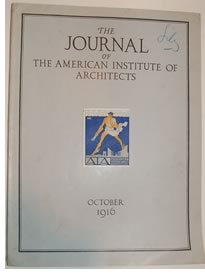 The
1911 Convention was highlighted by the presentation of the AIA Gold
Medal to George Browne Post at the New National Museum in
Washington on the evening of Dec. 13, 1911. AIA President Pond
opened by introducing Post, stating, “George B. Post joined
the American Institute of Architects in 1860, and for fifty years
he has given his time and talents to building up and improving the
standard of art, looking to the benefit to the public and the
improvement of the artist; his efforts have been one of the factors
in bringing the architect, sculptor and painter together in an
effort to produce harmony in the combination of the
arts.”
The
1911 Convention was highlighted by the presentation of the AIA Gold
Medal to George Browne Post at the New National Museum in
Washington on the evening of Dec. 13, 1911. AIA President Pond
opened by introducing Post, stating, “George B. Post joined
the American Institute of Architects in 1860, and for fifty years
he has given his time and talents to building up and improving the
standard of art, looking to the benefit to the public and the
improvement of the artist; his efforts have been one of the factors
in bringing the architect, sculptor and painter together in an
effort to produce harmony in the combination of the
arts.”
President Taft, in his address, said, “I count it a very
fortunate circumstance in the profession of the architect that
there is some material, definite printed certificate of excellence.
They do not have any such provision at the bar that I know of
(laughter), or in medicine (laughter), or even among clergymen
(laughter): you have to gather such certificates of excellence as
you can from the uncertain thing we call the public opinion of the
profession. But in architecture, apparently, they have the virtues
so much more solid and their standing in their profession so much
more certain that they classify them as golden, and silver and
copper (applause and laughter). I am glad to be here and to lend,
both personally and officially, such weight as I may (laughter) to
the importance and the appropriateness of this occasion of the
rewarding of a man who for 50 years has labored to elevate his
profession, and who has had the good fortune to live as long as Mr.
Post has lived, to see his profession develop in this country and
to feel that much of it has been due to his effort
(applause).”
M. J. J. Jusserand, the French ambassador, gave the major address,
saying of Post: “From first to last, he has acted upon a
principle which may appear simple enough when expressed, but is not
of such an habitual application as to have become banal; the
principle that a building is not an abstract composition raised
mid-air for the delectation of fleshless spirits, but is a reality
holding fast to the ground, to a particular sort of ground, in the
midst of definite surroundings, in view of certain uses, with all
of which it must agree: there must be harmony.” Post’s
response to these and to President Pond’s official
presentation, was a scant 100 words that included: “This medal
will be guarded always as a most precious treasure; its value will
be enhanced by the memory of this night and the circumstances of
its presentation.”
1912: The Institute faces a new
world
1912 proved momentous for the Institute: The AIA finally accepted
H. Van Buren Magonigle’s design of the seal that is still in
use, approved the end of publication of the Quarterly Bulletin (which had
begun publication in 1900), and in its stead approved publication
of a monthly Journal of the
American Institute of Architects. The Board of Directors
could also report that the Fine Arts Commission had recommended and
the Congressional Committee for the Lincoln Memorial (of which Taft
was the chair) had formally selected Henry Bacon’s design and
the Park Commission-recommended site for the Lincoln Memorial. The
first issue of the Journal
carried an article on the Lincoln Memorial with drawings, text, and
a summary of AIA efforts to secure the design on the Mall
site.
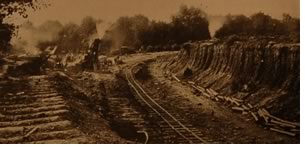 Evidently,
though, not everyone was enamored of the Bacon design. The Illinois
Chapter was one of the most vocal against it, noting that the
design was not a product of its time and had no “connection
historically, nor from the standpoint of Democracy with the work of
Abraham Lincoln, nor with his life, his Country or his time; but
suggests rather the age of Pericles.” The resolution adopted
by the chapter on Jan 14, 1913, also noted: “Said design is of
classic inspiration bearing a very close resemblance to Greek
Temple Architecture of the Doric period; and ... A large bronze
likeness of our beloved martyred President is to be placed in the
midst of said Greek Temple suggesting of Lincoln a ‘Greek
Deity.’” The resolution approved the site, but suggested
rethinking the design. Nevertheless, the House approved a joint
resolution on the Memorial on January 29, 1913, which President
Woodrow Wilson signed on February 1, accepting both Bacon’s
design and the Park Commission site.
Evidently,
though, not everyone was enamored of the Bacon design. The Illinois
Chapter was one of the most vocal against it, noting that the
design was not a product of its time and had no “connection
historically, nor from the standpoint of Democracy with the work of
Abraham Lincoln, nor with his life, his Country or his time; but
suggests rather the age of Pericles.” The resolution adopted
by the chapter on Jan 14, 1913, also noted: “Said design is of
classic inspiration bearing a very close resemblance to Greek
Temple Architecture of the Doric period; and ... A large bronze
likeness of our beloved martyred President is to be placed in the
midst of said Greek Temple suggesting of Lincoln a ‘Greek
Deity.’” The resolution approved the site, but suggested
rethinking the design. Nevertheless, the House approved a joint
resolution on the Memorial on January 29, 1913, which President
Woodrow Wilson signed on February 1, accepting both Bacon’s
design and the Park Commission site.
1913: The rise of the
Journal and Glenn Brown’s new legacy
1913 brought two events mourned by many. One was a change in
governance policies that led to the position of secretary to be
elected by the AIA Board, which effectively removed Glenn Brown
from office. A long resolution, prepared by a committee co-chaired
by Gilbert and William A. Boring, noted that the Institute was
“deeply impressed with the notable achievements and the
faithful services of Mr. Glenn Brown, who for fifteen years has
been its devoted Secretary and Treasurer.” The resolution,
which recounts events of the past 15 years that Brown either
initiated or to which he was central, was unanimously carried. 1913
was also the year that Charles Babcock, the last of the original 13
founders who met in Upjohn’s office on February 23, 1857,
passed away. The resolution on his August 27, 1913, death noted
“his death marks the passing of a great period which must ever
be of peculiar interest and value to American architects, for it
illustrates how high ideals and confident endeavor can bring order
out of chaos, confidence out of suspicion, and great accomplishment
by reason of character and integrity.”
1913 marked the first year of the publication of the Journal, which was to become one
of the most influential publications in its field. It published the
minutes of the Board of Directors, reproduced superb graphics, and
carried provocative articles, all with a point of view. Even the
cover was used to editorialize. For instance, the cover of the
February 1916 issue, introduced in bold type an article on
“Our Stupid and Blundering National Policy of Providing Public
Buildings, Showing how the city of Washington is being marred by
the erection of office buildings for rental to the Government at
rates based upon inflated values.” It was a topic the magazine
would return to again and again. The cover of the May 1916 issue
noting, in equally bold type, “Only a determined national
effort, led by unceasing patience, directed by an intelligent
appreciation, and inspired with the vision of Washington and
Jefferson, can save the nation’s capital from the
architectural desecration which has already wrought an injury
greater than the nation knows.” Charles Harris Whitaker, its
editor, hired Clarence Stein as an associate editor and published
both Lewis Mumford’s first article and the last written work
of Louis Sullivan. Along the way, dreamy photographs of New York
and New Orleans, drawings and photographs of colonial mansions, and
news of current events made their way into the magazine.
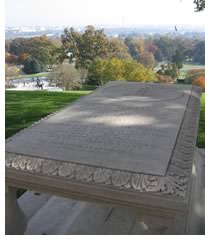 Glenn
Brown’s relationship with the Octagon did not end in 1913, for
he was hired almost immediately to do something that he had begun
years before: He wrote about the Octagon and hired Frances Benjamin
Johnston to photograph it. The AIA asked Brown’s firm (in
which his son Bedford Brown was a partner) to make measured
drawings of the house. The drawings were published in a monograph
with photographs of the house and its furnishings, and a history
penned by Glenn Brown. It is not praising the drawings too highly
to note that they established standards for such measured drawings;
standards which would be picked up a decade later when the Historic
American Buildings Survey began.
Glenn
Brown’s relationship with the Octagon did not end in 1913, for
he was hired almost immediately to do something that he had begun
years before: He wrote about the Octagon and hired Frances Benjamin
Johnston to photograph it. The AIA asked Brown’s firm (in
which his son Bedford Brown was a partner) to make measured
drawings of the house. The drawings were published in a monograph
with photographs of the house and its furnishings, and a history
penned by Glenn Brown. It is not praising the drawings too highly
to note that they established standards for such measured drawings;
standards which would be picked up a decade later when the Historic
American Buildings Survey began.
The Octagon Monograph,
issued in a portfolio containing some 30 folio-sized drawings, was
promoted by the Journal,
which noted, “One cannot enter it without unconsciously
peopling its rooms with the gracious men and women of that
day—there may come even a lingering regret over the changes
which seem to have made that life no more than a memory—and
there will surely come the devout wish that the whole may be
jealously guarded and preserved as an inspiration to future
generations.”
1916: The “winds of
war”
In 1916, the Board of Directors could report a membership of
1,432 but note that “The architectural profession is at best a
small one numerically, and the membership of the Institute does not
as yet comprise a majority of the members of the profession. Until
that point has been reached and passed, the Institute cannot speak
with complete authority in a country where majority rule
governs.”
Whatever the state of practice in this country, the coming
conflagration could not be ignored. President Mauran recalled that,
“At the last two conventions my predecessor touched our hearts
and stirred our every sympathy with his word-pictures of the
tragedy being enacted across the sea. Today the tragedy still holds
sway, but we must look beyond that moment of devout thanksgiving
when peace shall have rung the curtain down, to the day when
war-weary Europe shall confidently demand not our sympathy alone
but our sympathetic constructive cooperation. And on that day let
us not be found unprepared to take up the responsibilities which
belong to us by right and by training as citizens of the
world.”
Those responsibilities would arrive with force in 1917.
Copyright 2005 The American Institute of Architects. All rights reserved. Home Page
|
AIA150 Rolling History  A Beginning, 1857-1866 A Beginning, 1857-1866 The Second Decade, 1867-1876 The Second Decade, 1867-1876 1877-1886: Westward and Upward 1877-1886: Westward and Upward 1887-1896: A Decade of Outreach, Inclusiveness, and Internationalism 1887-1896: A Decade of Outreach, Inclusiveness, and Internationalism Women and Women Architects in the 1890s Women and Women Architects in the 1890s 1897-1906: The AIA Moves to and Changes Washington 1897-1906: The AIA Moves to and Changes Washington The Institute's Influence on Legislative Policy The Institute's Influence on Legislative Policy At 50, the AIA Conceives the Gold Medal, Receives Roosevelt's Gratitude At 50, the AIA Conceives the Gold Medal, Receives Roosevelt's Gratitude Spinning a Golden Webb Spinning a Golden Webb 1909-1917: The Institute Comes of Age in the Nation's Capital 1909-1917: The Institute Comes of Age in the Nation's Capital 1917-1926: A New Power Structure: World War I, Pageantry, and the Power of the Press 1917-1926: A New Power Structure: World War I, Pageantry, and the Power of the Press 1927-1936: A Decade of Depression and Perseverance 1927-1936: A Decade of Depression and Perseverance The AIA in Its Ninth Decade: 1937-1946 The AIA in Its Ninth Decade: 1937-1946 1947-1956: Wright Recognition, White House Renovation, AIA Closes on 100 1947-1956: Wright Recognition, White House Renovation, AIA Closes on 100 The Tenth Decade: 1957-1966 The Tenth Decade: 1957-1966 1967-1976: New HQ and a New Age Take Center Stage 1967-1976: New HQ and a New Age Take Center Stage A New Home for the AIA in 1973; A Greener Home in 2007 A New Home for the AIA in 1973; A Greener Home in 2007 Diversity and the Profession: Take II Diversity and the Profession: Take II  'The Vietnam Situation Is Hell': The AIA's Internal Struggle over the War in Southeast Asia 'The Vietnam Situation Is Hell': The AIA's Internal Struggle over the War in Southeast Asia 1977-1986: Activism and Capital-A Architecture Are Alive at the AIA 1977-1986: Activism and Capital-A Architecture Are Alive at the AIA 1987-1996 Technology, Diversity, and Expansion 1987-1996 Technology, Diversity, and Expansion |
||
 |
||
|
Image 1: Charles Babcock, the last surviving founder of the
American Institute of Architects, attended the 50th anniversary
celebration of the AIA’s existence in 1907. He died in
1913.
|
||